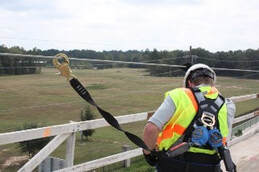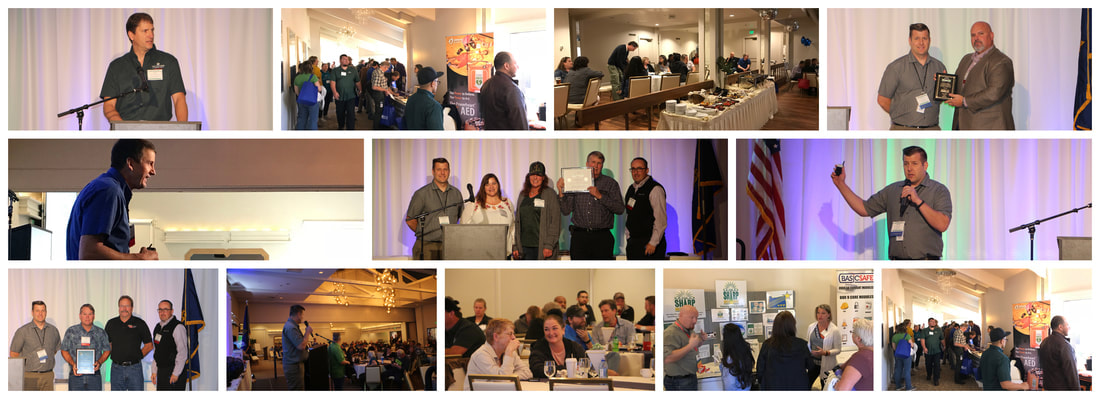
Fall prevention is especially critical in situations where fall arrest systems or other forms of PPE are ineffective or not typically used, such as potential falls of less than 15 feet, says Rob Brauch, president of Occupational Health and Safety Solutions Inc., a longtime safety professional and member of ASSP. A fall from 15 feet can achieve a speed of impact of 21 miles per hour and hit the body with 9,000 joules of energy — the equivalent of two exploding grams of TNT.
“Many of those falls occur when a person is climbing on machines they shouldn’t have been climbing, working from a ladder that wasn’t secure or being in an area that wasn’t protected,” he says.
These types of falls are also alarmingly common — they represent nearly half of falls that result in injuries or death, according to U.S. Bureau of Labor Statistics — yet are not often the focus of fall prevention or fall protection efforts.
“These fatalities do not need to occur,” Brauch says. “Many are preventable without going through all the various steps needed to get into harness, have tie-offs and do all the different things we’d have as traditional fall protection.”
Brauch recommends tackling these situations with fall prevention.
5 Things to Consider in Fall Prevention Versus Fall Protection
When comparing fall prevention and protection controls, you should consider several factors, including some methods that address temporary work under 15 feet.
1. Aim for Best Practices, Not Just Compliance
Fall-related issues make up four of the Top 10 OSHA citations:
- No. 1: Fall protection programs
- No. 3: Ladders
- No. 4: Scaffolding
- No. 8: Fall prevention training
“When compliance with OSHA regulations is the sole concern, it’s common to ‘PPE it away,’” Brauch says.
But fall protection does not always tick all those boxes.
Combined with the cost of purchase, inspection, training and replacement, “PPE also has hidden costs in terms of diminished worker mobility, decreased efficiency and less job satisfaction,” Brauch says.
By focusing on best practices instead of compliance, you can often solve the issue in a way that optimizes efficiency and quality of outcomes, he adds.
2. Focus on the “Sweet Spot” in the Hierarchy of Controls
The hierarchy of controls presents the ideal prioritization of hazard controls to address a safety issue, starting at elimination, then flowing down to substitution, engineering controls and administrative controls, with PPE as the solution of last resort.
But since working from height is often an integral part completing the job, it may not be possible to eliminate the hazard, and substitution is rarely practical. So, while PPE can be effective, it presents associated trade-offs, costs and movement restrictions.
That’s why Brauch recommends engineering and administrative controls, which he calls the “sweet spot” of the hierarchy.
3. Determine Whether Fixed or Temporary Fall Prevention Controls Will Work
“Alternative and technical solutions exist in the form of fixed or temporary engineering controls for fall prevention . . . where other accepted fall protection methods may be too complex, restrictive or impossible,” Brauch says.
Fixed engineering controls that remove the worker from the hazard include permanent elevated walkways, platforms and other structures, Brauch explains. However, since much of the work performed at height is nonroutine, often involving maintenance or repair, a fixed solution may be impractical.
4. Assess Whether the Situation Warrants Temporary Controls
Any constraint on permanent fall prevention solutions may require temporary controls. For example, temporary controls may be preferable in these situations:
- Non-routine task
- Short-duration task where bringing in scaffolding contractors may cause project delays and increase costs
- Task that requires workers to have mobility while staying safe
- Task involving older machinery installed without safe access at height
- Work from a permanent walkway or elevated platform that restricts normal operator access needed for production
- Work involving a machine around which you can’t install guardrails
5. Explore Engineering Controls for Fall Prevention
- Scaffolds or scissor lifts: These devices are proven and widely accepted for intended applications, but are subject to detailed, comprehensive OSHA regulations. Training is critical, Brauch says, because incidents do still occur.
- Mobile ladder stands: While these devices have limitations — for example, they can’t cantilever out, they require a large footprint — mobile ladder stands are an effective solution to safer work at height when used in accordance with American Ladder Institute standards.
- User-configurable elevated platforms and walkways: These look similar to scaffolds, but they are pre-engineered by a trained and certified assembler so they don’t require intensive scaffold certification training. They can also be assembled without special tools, offer reconfigurability options and fit into tight spaces. When using these devices, it’s important to understand working load limits and ensure that handrails and guardrails are installed at the proper height, Brauch says.
- Specialized mobile device with a cantilever deck: Using counterweights or other means, these devices allow for greater reach through specialized ascent platforms without sacrificing rated load. With locking wheels, their footprint can be minimized and the device can be cantilevered in various directions and set to heights from 9 to 12 feet.
What’s Next? A Focus on Fall Prevention
Brauch recommends all safety professionals familiarize themselves with the ANSI/ASSP Z359.1-2020 Fall Protection Code and consider a range of solutions.
“Using temporary deployment of engineering controls can be both safe and more cost-effective,” Brauch says, but warns: “Training and correct use of any fall prevention devices are just as important as they are for PPE.”
- ASSP 2024
 RSS Feed
RSS Feed
